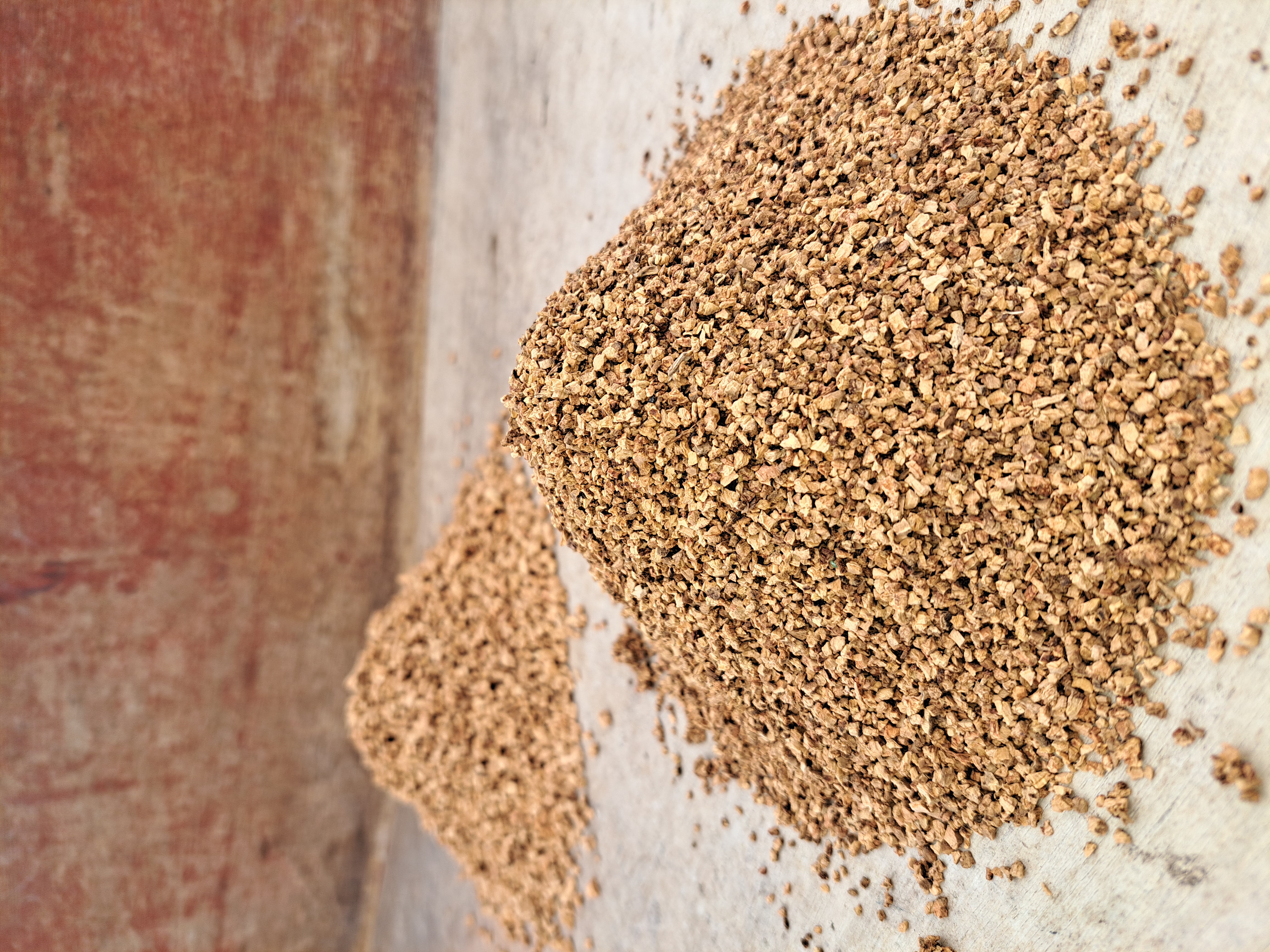Cork Granules. Rosy explains why Hardy’s are switching to this sustainable ingredient

Why we’re switching to cork.
Horticulture has traditionally used perlite and vermiculite when propagating cuttings and seeds. These materials are finite, being volcanic rock and a mined mineral respectively. Extraction and processing of these materials are terrible for the environment and require very high amounts of energy and long-distance, carbon producing transportation, to bring them to the UK.
Cork granules are a by-product of compressed cork sheets produced for insulation and sound-proofing purposes. Any waste following the cutting of the sheets is ground into granules of various grades. These are: lighter than vermiculite & perlite which means you can transport more in volume; and more sustainable because cork trees, once harvested, regrow their layers of bark without ill effect. Cork has an added benefit of having been shown to have natural anti-fungicidal and anti-bacterial properties, which explains why cork trees are usually healthy and don’t appear to get attacked by pests and diseases.
What has worked:
Over the past 2 years Rosy and the Propagation team here at Hardy’s Cottage Garden Plants have been trialling the use of cork in the propagation of our herbaceous perennials. Following a number of tests using cork instead of vermiculite and perlite, Rosy and the propagation team can now use the following mixtures:
Using the 1 – 2 mm size granules: replacing perlite
Mix the 1-2mm cork into peat-free growing media (1-part cork to 3-4 parts compost). Mixing these into compost gives a light weight, free-draining growing media. If you want to make the mix heavier you can mix in a little bit of horticultural grit.
You can also sprinkle 1 – 2 mm size granules on the surface of the media of newly struck cuttings. It keeps the cutting trays or modules clean. This size of cork granule doesn’t work so well for topping seeds as it can create a little bit of a cap and the water doesn’t penetrate properly.
Using 4-5mm cork granules : replacing vermiculite
Sprinkle a very thin layer of 4-5 mm cork to cover seeds which have yet to germinate. This has good air and water porosity which makes it easy for the newly germinated seedlings to push through. But, you have to be careful not to use too much cork.
Alternatively, cork can also be used to top the soil after seeds have germinated. Use a small amount to enable water to penetrate. This will keep the surface clean and means you will get less damping off and therefore fewer losses.
Rosy has found that using cork in this way results in:
- Fantastically fast draining pots
- No slimy green growth on tops of seed trays due to the anti-bacterial and fungicidal qualities of cork
- A reduction in the prevalence of 2 types jumping insects, Sciarid and Shore Fly as the surface of the pot is cleaner, leaving little or no debris for these insects to feed on
- 4-5 mm cork granules are the same size as vermiculite
- You use less cork than vermiculite
Rosy has also found that:
- Cork does not assist with water absorption as perlite does
- Watering heavily can cause the cork topping to wash away
- Using too much cork on top of pots can prevent germinating seeds pushing through
- Cork is more expensive than perlite and vermiculite, but you get more for your money, and you use less, making it as, or more, cost effective.
Other plant trials.
Rosy is using cork to pot all her Aeoniums using her ‘crumble mix’ which consists of 3 parts compost to 1-2 parts cork (1-2mm). This is a lovely friable, free-draining mix that suits her succulents perfectly. She uses a chunky 20-50 mm grade as a decorative pot topper and is also testing it as an alternative to bark for planting orchids.
Want a more hands on approach to using cork in horticulture? Join Rosy at one of her propagation workshops here on the nursery. See: events
